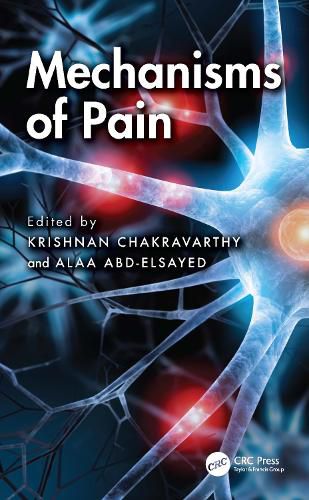Readings Newsletter
Become a Readings Member to make your shopping experience even easier.
Sign in or sign up for free!
You’re not far away from qualifying for FREE standard shipping within Australia
You’ve qualified for FREE standard shipping within Australia
The cart is loading…






Pain is a serious health problem. This book presents an intensive review of the anatomy, physiology, and pharmacology of the systems that mediate nociceptive processing. The authors cover areas that include anatomy, central and peripheral nerve processing, tissue and nerve injury states, as well as preclinical models of pain.
Mechanisms of Pain also covers important clinical concepts, with specific emphasis on mechanisms of action. Written by UCSD faculty awarded by the American Academy of Pain Medicine top pain fellowship teaching program, this book covers important areas of science required to understand pain medicine. They discuss post-tissue and nerve injury pain states of primary afferents and the spinal cord. The authors also cover mechanisms of action of clinically relevant analgesics (opiates and non-opiates). The authors also cover psychological aspects of pain and the pathophysiology of migraines, as well as the genetics of pain.
This comprehensive book is to guide undergraduate, graduate, and clinicians in the field of pain medicine on important concepts related to the science of pain.
$9.00 standard shipping within Australia
FREE standard shipping within Australia for orders over $100.00
Express & International shipping calculated at checkout
Pain is a serious health problem. This book presents an intensive review of the anatomy, physiology, and pharmacology of the systems that mediate nociceptive processing. The authors cover areas that include anatomy, central and peripheral nerve processing, tissue and nerve injury states, as well as preclinical models of pain.
Mechanisms of Pain also covers important clinical concepts, with specific emphasis on mechanisms of action. Written by UCSD faculty awarded by the American Academy of Pain Medicine top pain fellowship teaching program, this book covers important areas of science required to understand pain medicine. They discuss post-tissue and nerve injury pain states of primary afferents and the spinal cord. The authors also cover mechanisms of action of clinically relevant analgesics (opiates and non-opiates). The authors also cover psychological aspects of pain and the pathophysiology of migraines, as well as the genetics of pain.
This comprehensive book is to guide undergraduate, graduate, and clinicians in the field of pain medicine on important concepts related to the science of pain.